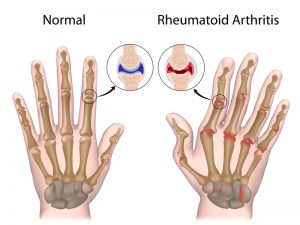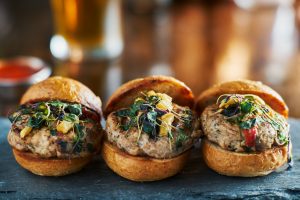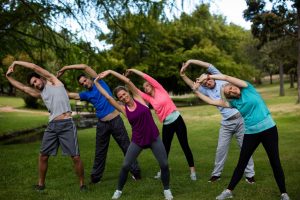Rheumatoid Arthritis (RA) is a chronic inflammatory, autoimmune disorder that most commonly affects your joints. Based on recent data around 1.3 million adults across the United States suffer from RA. Along with prescription medications and therapy, properly prescribed exercise can also alleviate symptoms of RA and improve quality of life for those suffering with the disease.
A major symptom of RA is pain in joints, along with stiffness and loss of mobility. Developing a stretching routine can greatly improve mobility in affected and unaffected joints, decrease join stiffness, and could lead to less pain with certain movements. Doctors have recommended yoga and/or Tai Chi classes to help patients improve joint range of motion and to decrease stress.
Low-impact aerobic exercises are great for improving heart health and cardiovascular endurance while avoiding placing too much stress on your joints. Low impact dance classes, walking, or stationary bikes are some examples of aerobic exercises that are joint friendly. Swimming is also a phenomenal way to build endurance and strengthen muscle with almost no stress on joints.
It is also very important to include resistance training in your exercise programs. The goal being to relieve stress in affected joints by strengthening the muscles around them. Resistance bands, machines, free weights and body weight exercise can all be used/performed to achieve strength and mobility goals. Free weights may be better than some machines since they allow you to move in your body’s natural path of motion and do not force your joint into specific movement patterns. A physical therapist or exercise physiologist with proper experience can give guidance for appropriate exercise selection.
Final tips:
- Don’t forget to stretch and strengthen smaller joints/muscles such as your ankles, wrists, and fingers.
- Wear appropriate work out attire (for example proper footwear and insoles to avoid any slips or falls and to promote optimal joint alignment and stability).
- Listen to your body! Learn the difference between soreness and pain and avoid anything that causes the latter.
By David McCalla, CSCS
“Best Exercises for Rheumatoid Arthritis.” Www.arthritis.org, www.arthritis.org/about-arthritis/types/rheumatoid-arthritis/articles/best-exercises-for-ra-2.php.




 There are more than 200,000 new cases of Parkinson’s Disease seen in the United States per year. Parkinson’s Disease (PD) is a disorder of the central nervous system that usually presents itself in people over 60 years old. PD is typically a slow progressing disease that causes impaired movement and functional mobility. Keeping good range of motion is vital for maintaining strength and mobility. As an example, stretching the front of the hip, such as a hip flexor stretch, may help improve walking mechanics which will further help improve gait (see picture).
There are more than 200,000 new cases of Parkinson’s Disease seen in the United States per year. Parkinson’s Disease (PD) is a disorder of the central nervous system that usually presents itself in people over 60 years old. PD is typically a slow progressing disease that causes impaired movement and functional mobility. Keeping good range of motion is vital for maintaining strength and mobility. As an example, stretching the front of the hip, such as a hip flexor stretch, may help improve walking mechanics which will further help improve gait (see picture).


